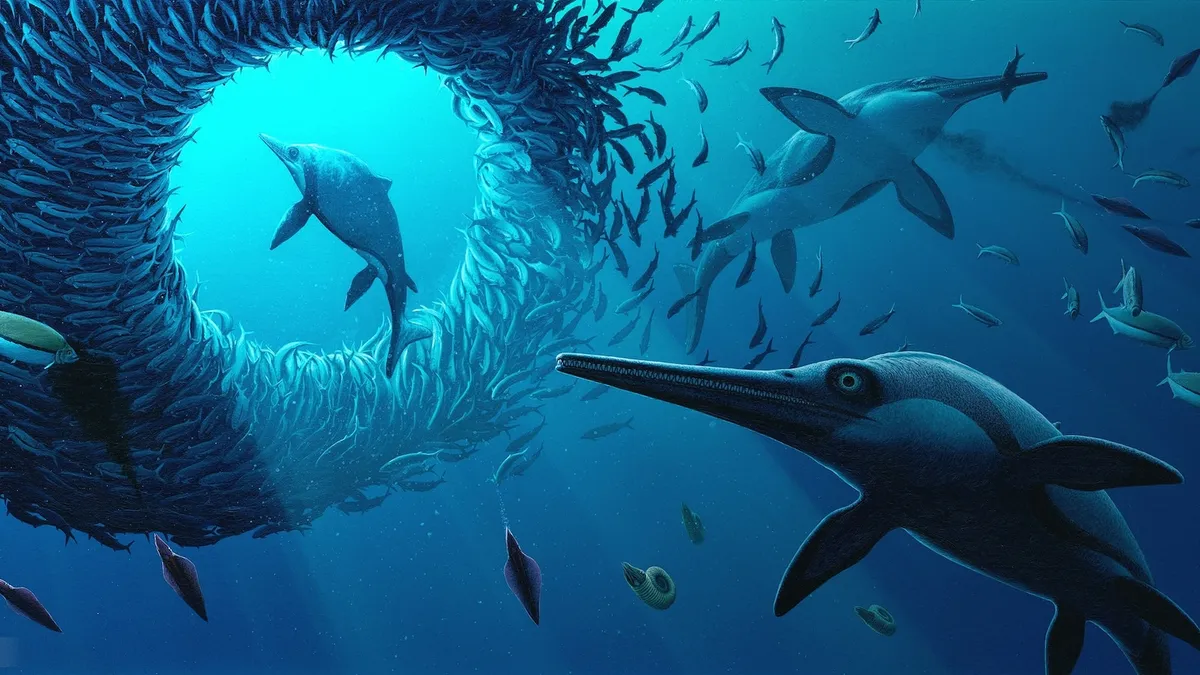
A remarkable discovery has been made in the realm of paleontology with the identification of a new species of ancient marine reptile, known as the Xiphodracon goldencapsis. This fascinating species belongs to the ichthyosaur order, which comprises large extinct marine reptiles that thrived during the Early Jurassic era, approximately 190 million years ago. The groundbreaking findings were published in the journal Papers in Palaeontology on Thursday, shedding light on this newly identified ichthyosaur.
The fossils of Xiphodracon goldencapsis were unearthed by professional fossil collector Chris Moore in 2001, in the Golden Cap area of Charmouth, England. This region is part of the renowned Jurassic Coast, a designated World Heritage Site celebrated for its rich fossil deposits. Judy Massare, a Professor Emerita of Geology at SUNY Brockport and co-author of the study, shared insights with ABC News regarding the significance of this find.
The fossil set includes a remarkably preserved skull featuring an enormous eye socket and a distinctive long, sword-like snout. According to a statement from The University of Manchester, the fossil is preserved in three dimensions, offering an exceptional opportunity for scientific study.
Although the fossils were on display at the Royal Ontario Museum in Canada, they were not thoroughly examined until the fall of 2024. Researchers identified several unique features that set Xiphodracon goldencapsis apart from other ichthyosaurs of the lower Jurassic period. One notable characteristic was the unusual bone structure surrounding the external nostrils, along with a nasal opening that is more round than oval.
Massare pointed out that this ichthyosaur possessed a long, slender snout and exceptionally narrow teeth. Her expertise in ichthyosaur teeth led her to conclude that this creature likely preyed on soft, small marine animals, such as squid-like creatures. Interestingly, the stomach contents of the fossil revealed remnants of fish-like and cephalopod pieces, further supporting this dietary hypothesis.
Over the last two centuries, ichthyosaur fossils have been discovered globally, including notable sites in England, southern Germany, British Columbia in Canada, and central Wyoming in the U.S. According to Massare, thousands of ichthyosaur fossils have been found along the U.K.'s Jurassic Coast, making this area a hotspot for ichthyosaur research.
While ichthyosaurs can be found worldwide, the most extensively studied specimens are from England. Massare emphasized that Jurassic-era ichthyosaurs are recognized for their long snouts and dolphin-like bodies, serving as active predators in the ocean. Their swimming technique resembled that of dolphins, with tails moving side to side rather than up and down.
The estimated length of the Xiphodracon goldencapsis specimen is nearly 10 feet. This species lived during a time when several families of ichthyosaurs faced extinction, making it a significant find in the study of prehistoric marine life. Dean Lomax, an honorary researcher at The University of Manchester and lead author of the paper, stated that ichthyosaurs from the period between 193 million and 184 million years ago are incredibly rare.
According to the researchers, Xiphodracon goldencapsis is likely the world's most complete prehistoric reptile from the Pliensbachian period, highlighting its importance in understanding the evolution and diversity of ichthyosaurs. This discovery not only adds to the existing knowledge of marine reptiles but also emphasizes the rich paleontological heritage found along the Jurassic Coast of England.